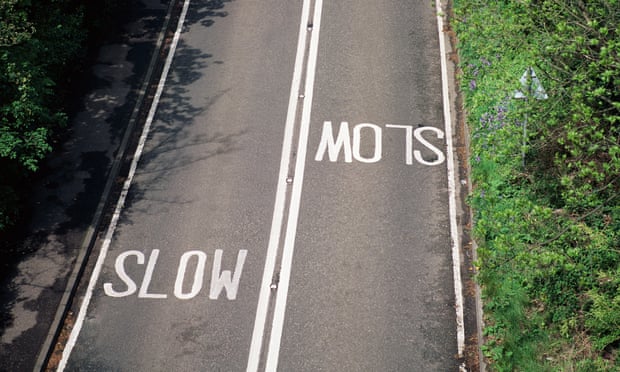
Road safety experts are deeply divided over the trial removal of white lines from the centre of highways, which research has shown may cause drivers to slow down.
Removing the lines has been shown to make motorists drive more cautiously, reducing their speeds and hugging closer to the kerb for fear of going over the “imaginary” central line.
Council bosses in Norfolk are in discussions with the Department for Transport to erase the lines on some narrow roads in north Norfolk, as part of a suite of measures for a blanket reduction in speed limits to 40mph across the area, including on the A148 between King’s Lynn and Cromer, close to the the Queen’s Sandringham estate.
But the AA has voiced strong opposition to a more widespread use of the tactic, calling for road markings to be stepped up rather than decreased, with other road safety experts expressing concern that the lines’ removal could affect anti-accident technology in some vehicles.
Tracy Jessop, Norfolk’s assistant director for highways, said the council had been removing some central white lines for more than a decade in places where there was local support.
“We follow national guidance when designing any scheme and know the removal of a centre white line wouldn’t be suitable on main roads with high traffic flows, but it can work well on certain quieter roads which already enjoy lower traffic speeds,” she said. “Fewer road markings can improve street safety for everyone by making drivers more cautious, increasing awareness and lowering speeds.”
Several other local authorities in England have previously trialled removing the white lines from smaller roads after resurfacing work, with Transport for London (TfL) reporting success in slowing down drivers when it removed some dividing lines.
Two roads in Croydon – Wickham Road and Brighton Road – as well as Haringey’s Seven Sisters Road, had lines removed in 2014 and TfL research found that vehicle speeds decreased by up to 13%. TfL said it had no plans to actively remove markings, but said the trial had been positive.
Removing the lines was piloted by Wiltshire council as early as 2002, on 30mph roads that had street lighting. “It is something we still consider in areas we think it might work. There are now around 25 roads in the whole county,” a spokesman said.
“It tends to be in village settings where fewer markings could be aesthetically pleasing, as well as improving safety by making drivers more careful.”
David Davies, the executive director of PACTS, a parliamentary advisory group on road safety, said the method could have a particular effect on newly resurfaced roads. “A brand new surface can encourage drivers to go faster, but a lack of markings could counter that, reducing speed, say, from 35 to 28mph, and that could make a significant difference,” he told the Guardian.
Road safety charities have expressed scepticism that the removal of lines will reduce risk. Gary Rae, the campaigns director for Brake, said he was unconvinced.
“While crashes at lower speeds can mean fewer deaths and serious injuries, this data only seems to look at a possible reduction in average speed and not the number and nature of any collisions,” he said. “With or without white lines, drivers should always drive to the conditions of the road and well within the speed limit.”
Paul Watters, the head of roads and transport policy at the AA, said authorities should be looking to increase road markings, rather than decrease them. “Far from talking their use down we should be talking it up,” he said. “They have a vital role in keeping road users safe.
“Of course there should be places where they can be dispensed with and this has largely worked, but unlike road signs, markings are already less intrusive but still help road users.”
There are also concerns the removal could affect new safety technology in modern cars, which often relies on painted road markings. Some manufacturers install cameras that detect side markings painted on the carriageway, which can then be automatically compared with steering wheel motions to alert a driver that they are moving erratically.
“The future for autonomous features in vehicles is not that far away, and we may have the strange situation where experts will say we need white lines to make these safety systems work,” Davies said. “GPS is not sufficiently accurate.”
guardian.co.uk © Guardian News & Media Limited 2010
Published via the Guardian News Feed plugin for WordPress.
Plan to remove white lines from roads divides opinion











0 comments:
Post a Comment